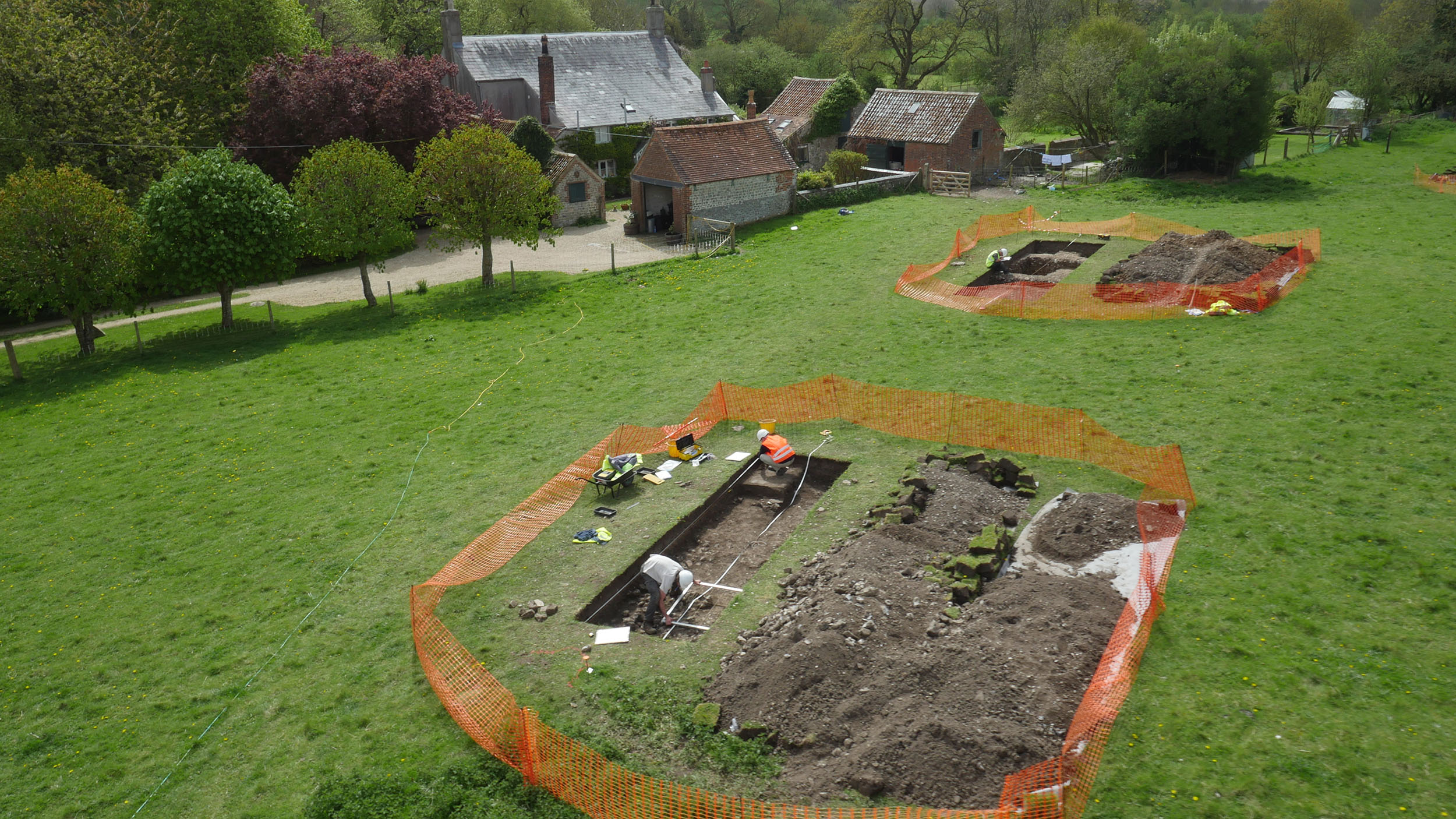Roman Villa Discovered Beneath Wiltshire Home
- Initial excavations by Historic England and Salisbury Museum suggest a villa of very significant size
- Finds include an elaborate mosaic, large collections of pottery, worked stone, animal bones, shells and various coins and metal objects
The remains of an extensive Roman villa have been discovered in the garden of a Wiltshire home. During building work, the owner, Luke Irwin, came across an untouched mosaic and immediately called the Wiltshire Archaeology Service, who invited Historic England and Salisbury Museum to investigate the discovery.
Historic England and Salisbury Museum carried out an eight-day excavation of part of the site. Together we confirmed that the mosaic formed part of a well preserved, complex villa which was built sometime between 175 AD and 220 AD, and was repeatedly re-modelled right up until the mid to late 4th century, with evidence of reuse of the site during the 5th century.
The Roman Villa
The structures found are similar to those found at Chedworth, suggesting that the villa could have belonged to a family of great wealth and importance.
We believe that parts of the double-courtyard villa had three storeys, based on the very thick walls which survive to almost 1.5m high and 0.9m wide. These are capped with a base for a timber frame so we understand that the ground floor walls were built in large blocks, with a second storey of timber, topped with a stone tile roof.
Other artefacts discovered include discarded oyster shells, stone roof tiles with nails still in place, a perfectly preserved Roman well and the stone coffin of a Roman child which held geraniums until it was identified.
Historic England Archaeologist Dr David Roberts said: “This site has not been touched since its final collapse around 1500 years ago and so has great potential to teach us about life in Roman and post-Roman Britain. The discovery of such an elaborate and extraordinarily well-preserved villa, undamaged by agriculture, is unparalleled in recent years and we think has great potential for further research.”
The excavation was carefully recorded following geophysical surveys by volunteers from Salisbury Museum and Archaeological Surveys Ltd, commissioned by the landowner. The excavation trenches have now been backfilled to better preserve the remains; if the trenches had been left open this would endanger the walls and features left in situ by the archaeological team. This is standard practice in archaeological investigations.
Post-Roman Remains
After the Roman period, post-built timber structures were built within the part-ruined villa. These remains have the potential to open a window into a little known period of British history - between the start of the 5th century and the completion of Saxon domination in the 7th century.
Historic England will continue to work with the owner, Salisbury Museum and Wiltshire Archaeological Service to explore future options for protecting and understanding this intriguing site.





